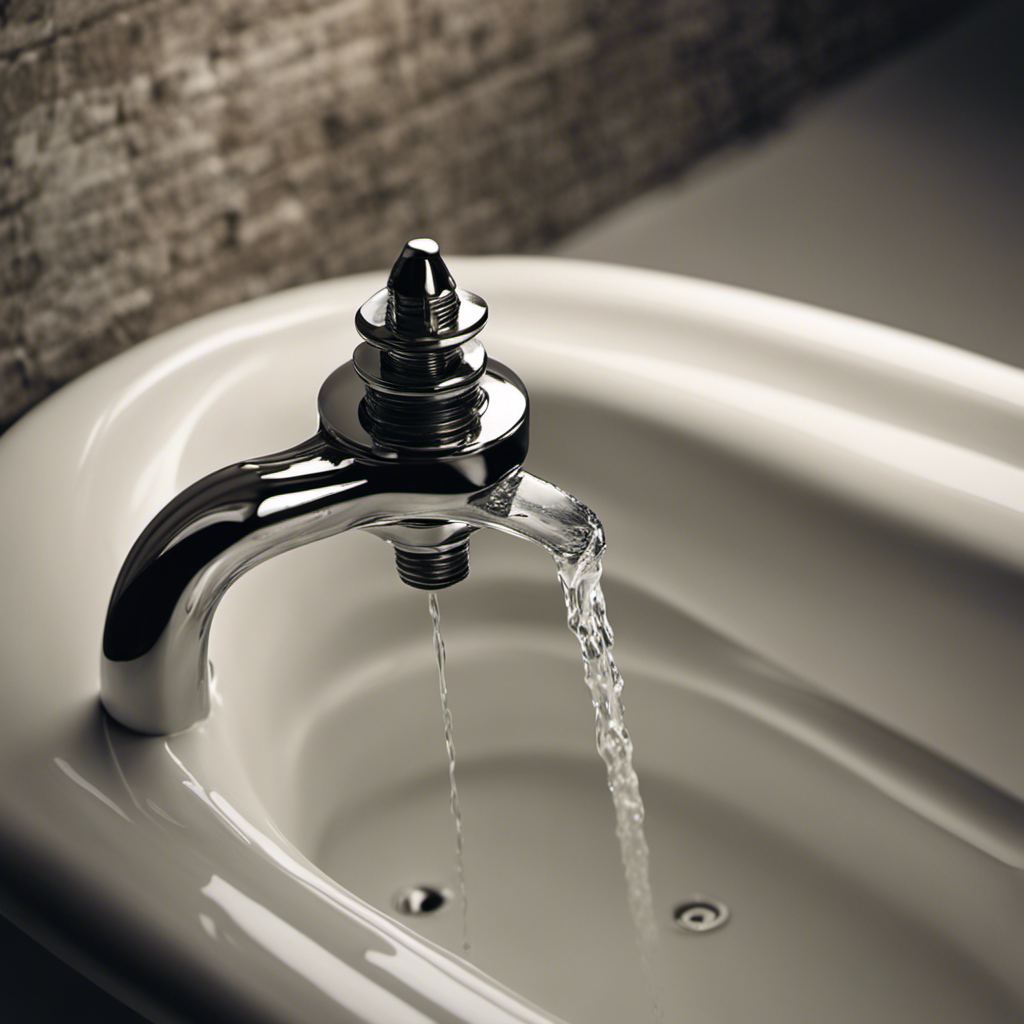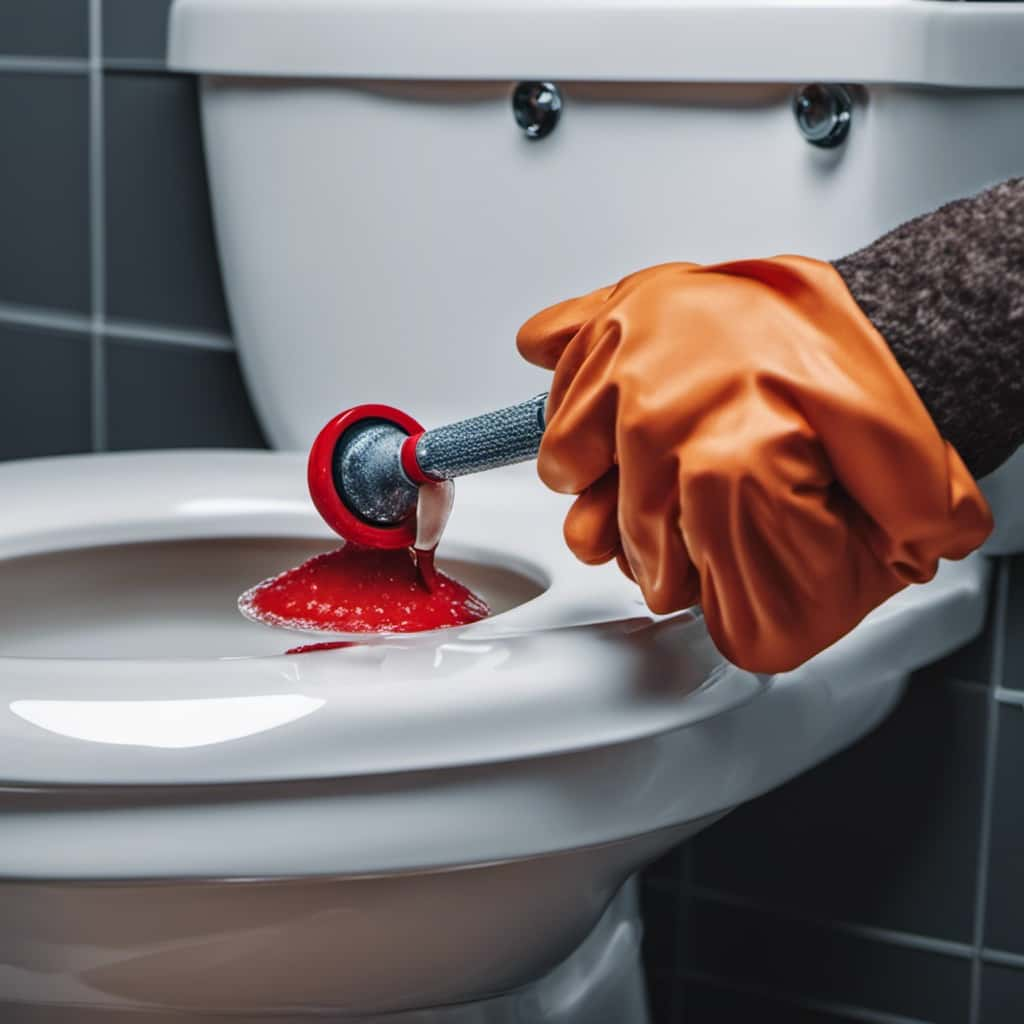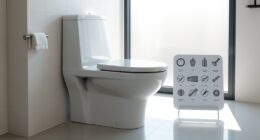Do you ever wonder how many gallons your typical bathtub can hold? Well, wonder no more! In this article, we will dive into the world of bathtubs and unravel the mystery of their water capacity.
From standard sizes to common measurements, we will provide you with all the information you need to determine exactly how many gallons your bathtub can hold.
So sit back, relax, and prepare to be enlightened about the fascinating world of bathtubs.
Key Takeaways
- The typical standard bathtub size ranges from 30 to 32 inches in width, 60 inches in length, and 14 to 17 inches in depth.
- The average bathtub capacity is around 40 to 80 gallons, but this can vary depending on the specific model and design.
- Common materials for bathtubs include acrylic, fiberglass, and cast iron, each with their own benefits and considerations.
- Determining the volume of a bathtub can be done by multiplying its length, width, and depth in feet, and it is important to consider water usage and conservation when choosing a bathtub.
Standard Bathtub Size
A standard bathtub is usually around 40-60 gallons. When it comes to bathtub dimensions, there are a few factors to consider.
The length of a standard bathtub is typically around 60 inches, while the width ranges from 30 to 32 inches. The depth of the tub varies as well, with a standard depth of around 14 to 17 inches. It’s important to note that these dimensions can vary depending on the specific bathtub model and manufacturer.
In addition to the dimensions, there are also different material options available for bathtubs. The most common materials used for bathtubs are acrylic, fiberglass, and cast iron.
Acrylic is a popular choice due to its durability and ease of maintenance. Fiberglass is lightweight and affordable, making it a practical option for many homeowners. Cast iron is known for its strength and heat retention properties, although it can be more expensive and requires regular maintenance.
Ultimately, the choice of bathtub material depends on personal preference and budget.
Average Bathtub Capacity
You’ll be surprised to learn that most tubs can hold a considerable amount of water. When it comes to bathtub dimensions, there are various options available to suit different needs and preferences.
The average bathtub capacity typically ranges from 40 to 80 gallons. This means that a standard-sized bathtub can hold enough water for a relaxing bath. However, it’s important to note that the actual capacity may vary depending on the specific bathtub model and its design.
Additionally, the material of the bathtub can also affect its capacity. Common bathtub material options include acrylic, fiberglass, and cast iron. These materials are chosen for their durability, ease of maintenance, and overall aesthetic appeal.
Common Bathtub Gallon Measurement
When considering the size of your tub, it’s important to be aware of the common gallon measurements used for determining capacity. This will help you determine how much water your bathtub can hold and manage your water usage effectively. Here are some common bathtub gallon measurements:
- Standard bathtubs typically hold around 42-80 gallons of water.
- Smaller, compact tubs usually have a capacity of 35-50 gallons.
- Deep soaking tubs can hold anywhere from 60-120 gallons of water.
- Clawfoot tubs, with their elegant design, typically have a capacity of 40-60 gallons.
- Whirlpool or jetted tubs have a higher water capacity, ranging from 70-120 gallons.
Knowing these measurements will allow you to choose the right bathtub for your needs and understand how much water you will be using for your baths. It’s always important to consider bathtub dimensions and water usage to conserve water and be environmentally conscious.
Determining Bathtub Volume
To determine the volume of your tub, simply multiply the length, width, and depth of the tub using the measurements in feet. Start by measuring the length of your tub from one end to the other. Then, measure the width by going from side to side. Finally, measure the depth by measuring from the bottom of the tub to the top edge. Once you have these dimensions in feet, multiply them together to find the volume in cubic feet.
It’s important to note that bathtub dimensions can vary depending on the style and design. Bathtubs can be made from various materials such as acrylic, fiberglass, cast iron, or porcelain. Understanding the typical bathtub water capacity can help you determine how much water it can hold.
Now that you know how to determine the volume of your tub, let’s move on to understanding typical bathtub water capacity.
Understanding Typical Bathtub Water Capacity
If you’re unsure about the water capacity of your tub, start by checking the manufacturer’s specifications. They usually provide detailed information on the dimensions and water depth of the bathtub. Understanding these measurements can help you determine how much water your tub can hold.
Here are some key points to consider when it comes to typical bathtub water capacity:
-
Bathtub dimensions: The size of your tub plays a significant role in its water capacity. Larger tubs generally have a higher water capacity compared to smaller ones.
-
Bathtub water depth: The depth of the bathtub also affects how much water it can hold. Deeper tubs can accommodate more water, allowing for a more immersive bathing experience.
-
Shape and design: The shape and design of the bathtub can impact its water capacity. Some tubs may have curves or angled sides that affect the amount of water they can hold.
-
Overflow drain: The presence of an overflow drain can limit the amount of water your tub can hold. It ensures that the water doesn’t overflow and cause damage to your bathroom.
-
Water displacement: Keep in mind that when you get into the tub, your body displaces water, reducing the effective water capacity. So, the actual amount of water you can comfortably soak in may be slightly less than the stated capacity.
Frequently Asked Questions
Can I Install a Larger Bathtub in My Bathroom if I Have Enough Space?
If you have enough space, installing a larger bathtub can be a great way to maximize your bathroom’s potential. Consider the dimensions and plumbing requirements before making your decision.
Are There Any Regulations or Guidelines for Bathtub Sizes in Residential Buildings?
When it comes to bathtub regulations and sizes in residential buildings, it’s important to know the guidelines. Understanding these rules will ensure that you choose the right bathtub for your space.
How Can I Calculate the Amount of Water Needed to Fill a Bathtub if It Is Not a Standard Size?
To calculate the water volume for a bathtub with non-standard dimensions, measure the length, width, and depth. Multiply these measurements together and convert to gallons using online calculators or formulas.
What Are Some Common Materials Used in Bathtub Construction?
When it comes to bathtub construction, common materials include acrylic, fiberglass, and cast iron. Acrylic is lightweight and easy to clean, while fiberglass is affordable but less durable. Cast iron is strong but heavy. Each material has its pros and cons.
Are There Any Safety Considerations to Keep in Mind When Filling a Bathtub With Water?
When filling a bathtub, it’s important to consider safety precautions to prevent accidents. Keep the area around the tub clear of objects, use non-slip mats, and test the water temperature before getting in.
Conclusion
So, now you know that the typical bathtub size can vary, but the average capacity is around 50-60 gallons.
This means that when you fill up your bathtub, you are essentially immersing yourself in a small pool of water.
Understanding the gallon measurement of a common bathtub is important for determining its volume and water capacity.
So next time you take a relaxing bath, you can visualize yourself soaking in a mini oasis of water, surrounded by tranquility and comfort.










